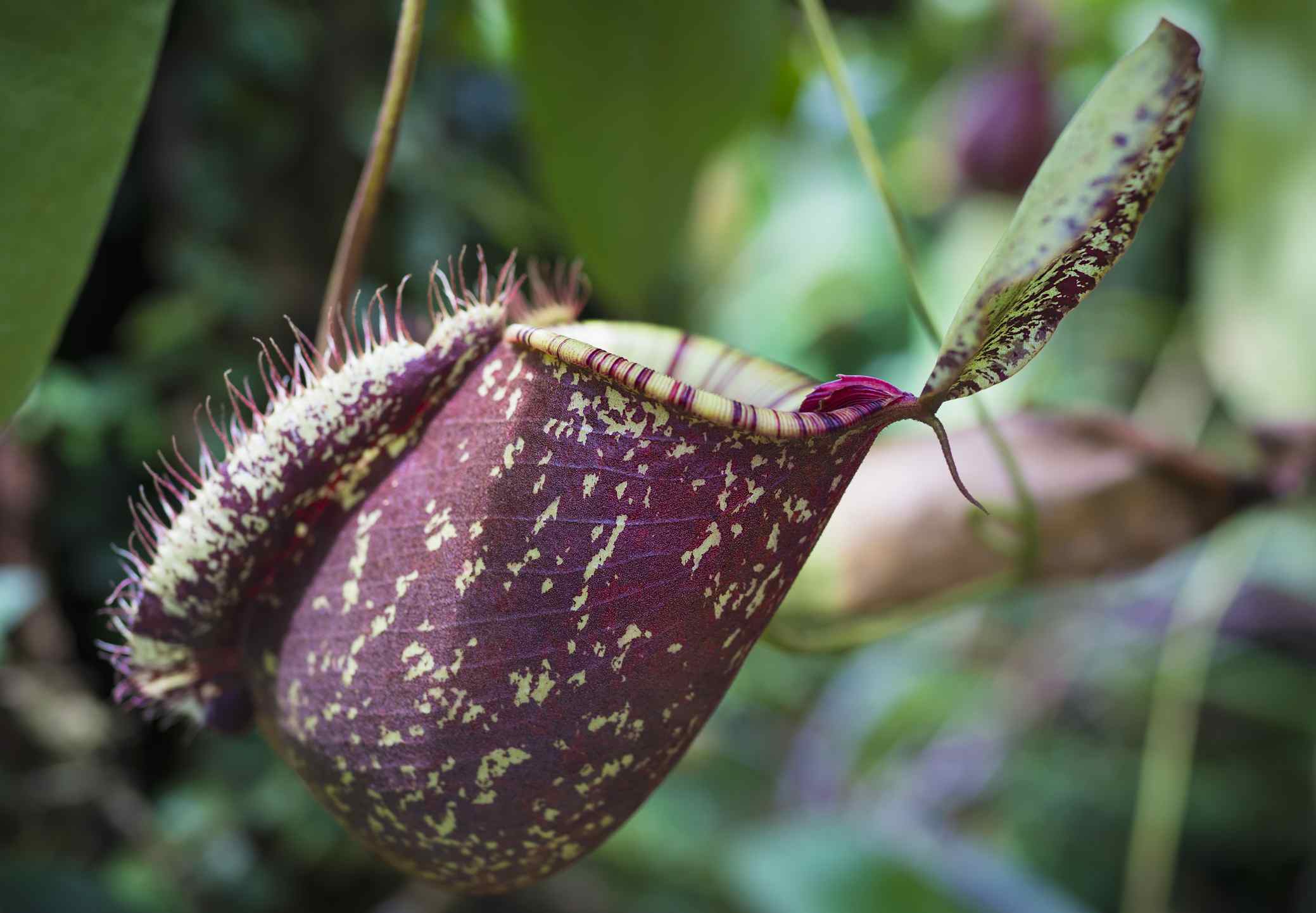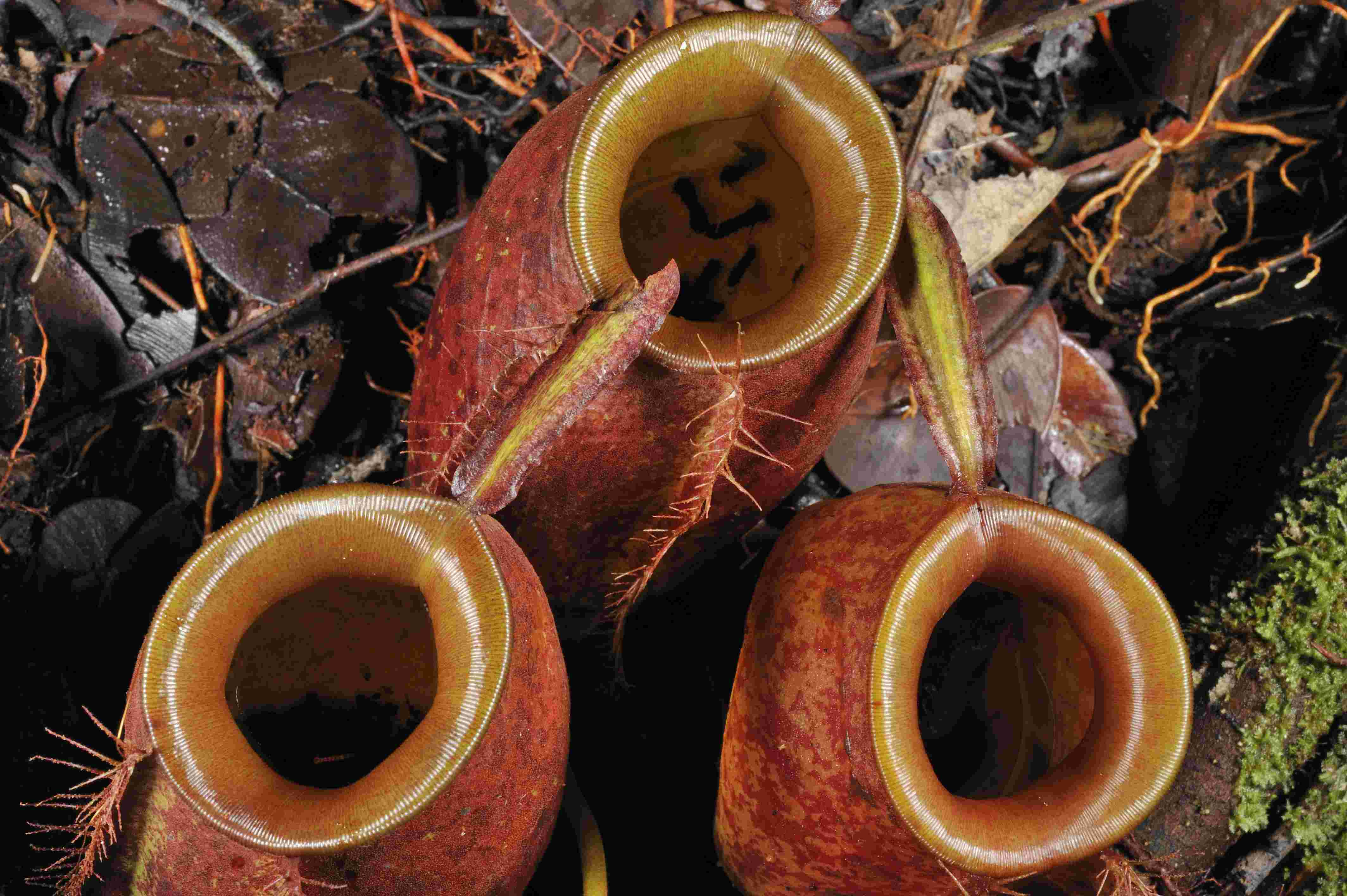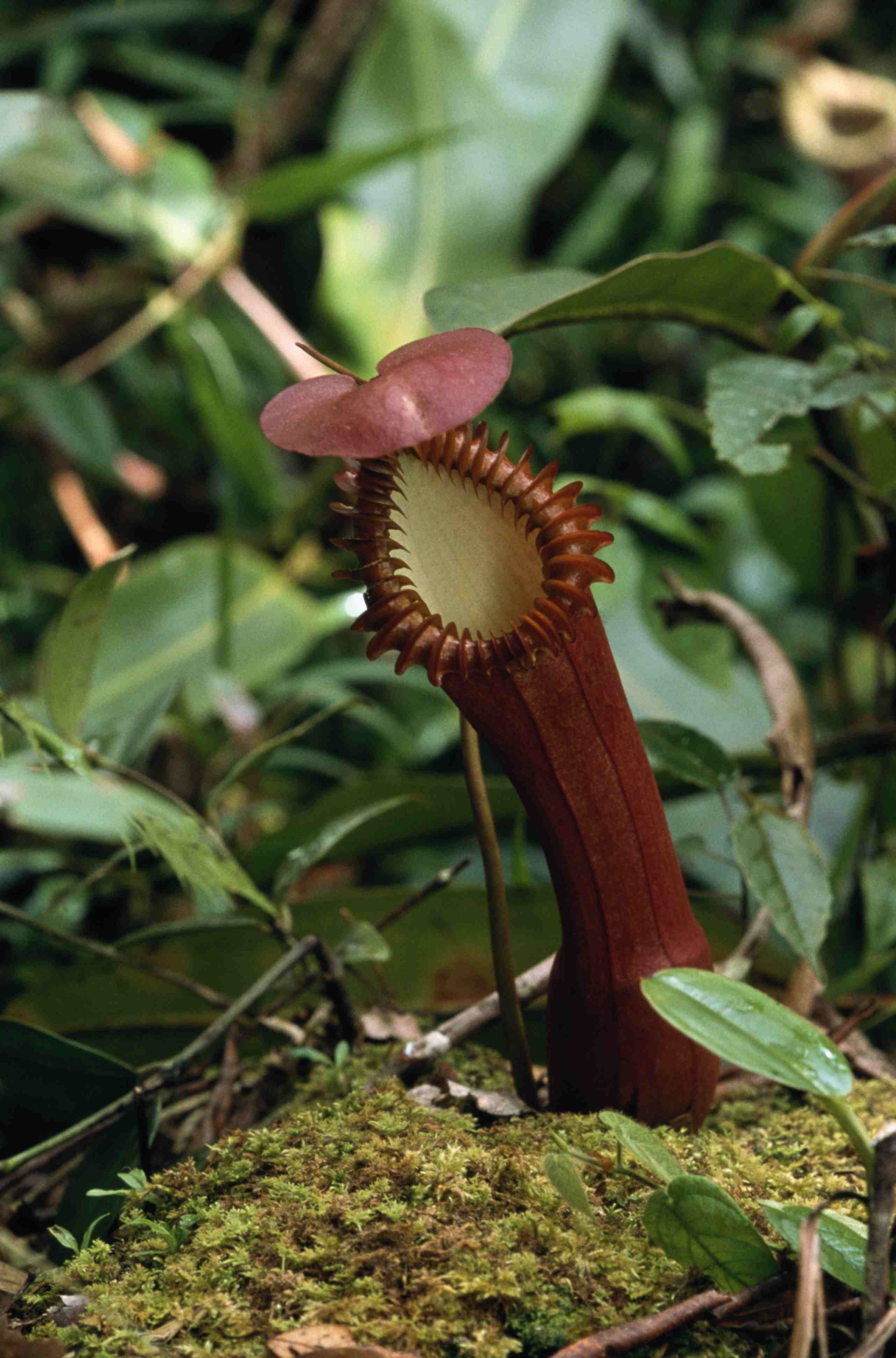
Plant
15:23, 25-Apr-2019
Carnivorous Plant: The tricky monkey cups
Updated
10:50, 26-Apr-2019
By Ding Qian

Nepenthes, also called tropical pitcher plant, is a genus of carnivorous plants which prey on insects or small animals for extra nutrition. The plant is also known as "monkey cup" because monkeys are seen drinking water from them.

The tropical pitcher plant is also called monkey cup. /VCG Photo
The tropical pitcher plant is also called monkey cup. /VCG Photo
Nepenthes is a very poetic name. It literally means "without grief." In Greek mythology, it is a drug that can quell all your sorrow. Is the plant really so magical?
When you approach the plant, the first eye-catching feature is their exotic-looking pitcher that starts as a bud and then expands to become a tube-shaped trap. This is the "grave" where insects end their lives.
The trap contains a syrupy fluid that can draw insects. But some of the largest species of Nepenthes, such as N. rafflesiana, can catch animals like lizards and rats. Surrounding the entrance to the trap is the lip. It is colorful enough to attract the prey and slippery enough for insects to "fall" into the trap. Above the lip is a lid, which is used to keep rain from falling into the pitcher and diluting the fluid within.
Nepenthes species usually have a shallow root system and a climbing stem which can stretch to several meters long. There are about 170 species of Nepenthes, but the number is increasing as new species are discovered each year.

A tropical pitcher plant. /VCG Photo
A tropical pitcher plant. /VCG Photo
The plant is mainly found in the Malay Archipelago. Depending on the places they grow, they are often graded as lowland or highland species. The lowland pitcher plants have no excessive demand for temperature difference, whereas highland species prefer warmer days and cooler nights.

A pitcher plant in Sarawak, Borneo, Malaysia. /VCG Photo
A pitcher plant in Sarawak, Borneo, Malaysia. /VCG Photo
Most pitcher plants thrive in environments with high humidity, so when you cultivate the plant, make sure the air is humid enough. The flowers of pitcher plants are quite small. They smell fragrant during the daytime but give off an unpleasant smell at night.

Interesting-looking trap of a pitcher plant. /VCG Photo
Interesting-looking trap of a pitcher plant. /VCG Photo
In China, the plant mainly grows in southern provinces including Guangdong and Hainan. But you can find them sold in many plant markets in the country.
About Carnivorous Plant series:
At this year's International Horticultural Exposition, there is a special zone in the Plant Pavilion for various carnivorous plants. Carnivorous plants are plants which prey on insects or small animals for extra nutrition that they cannot get simply from the soil, water and sunlight. In this series, we are going to present to you the most typical carnivorous plants.
(Cover images via VCG)
(If you want to contribute and have specific expertise, please contact us at nature@cgtn.com.)

SITEMAP
Copyright © 2018 CGTN. Beijing ICP prepared NO.16065310-3
Copyright © 2018 CGTN. Beijing ICP prepared NO.16065310-3